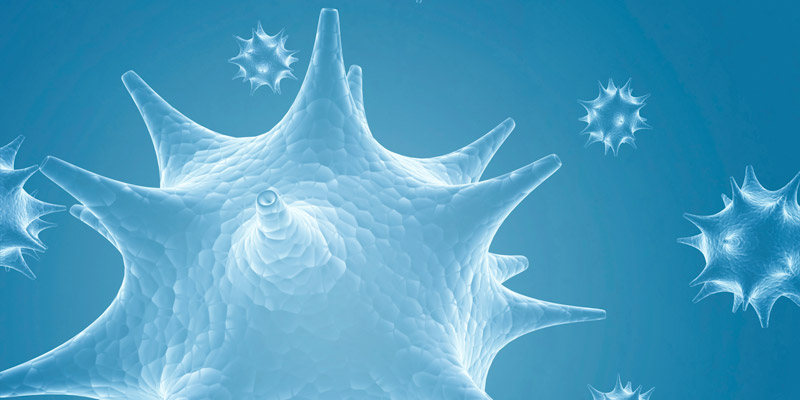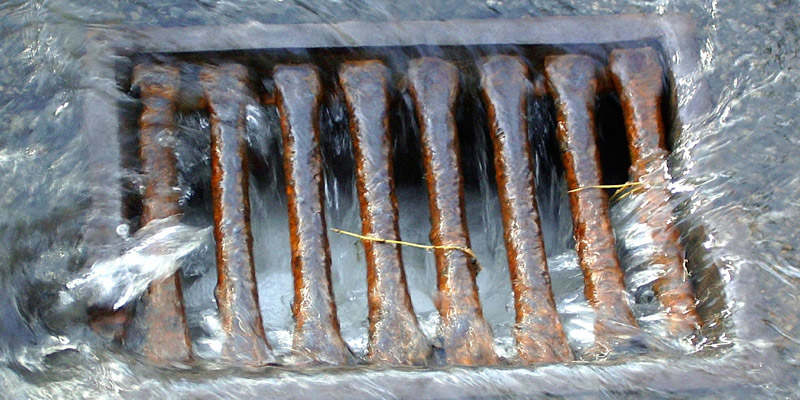Understanding Pathogen Transport and Survival in the Subsurface to Better Manage Ground Water Supplies and Risk of Contamination
Principal Investigator - Monica Emelko, Associate Professor, University of Waterloo (2007-2010)

Challenge
Groundwater-related outbreaks of disease can have serious implications for water quality and human health. These outbreaks have been mainly due to viral and bacterial agents (such as pathogenic strains of E. coli, Campylobacter, hepatitis A and Noroviruses). Knowledge concerning the transport and survival of these pathogens (bacteria and viruses) is lacking, and needs to be addressed in order to design better strategies to reduce these risks. However, the technicalities of assessing transport and survival are challenging to address. Controlled laboratory experiments strive to represent many square kilometers in a small laboratory and are often criticized for being too artificial, and not representative of the natural environment. In contrast, studies conducted at full-scale in the natural environment are very costly and difficult to control to ensure that useful data is obtained. Additionally field tests are often described as site-specific and lacking relevance to other sites/situations. In order to address the needs of regulators, water suppliers, and the public these two methodologies need to be integrated to address the challenge of pathogen transport and survival.
The project team, led by Dr. Monica Emelko, have designed field and laboratory experiments to bridge this divide in knowledge as a means to better manage groundwater supplies and interpret risk of contamination.
Project
This project investigated the transport and survival of pathogens utilizing both field and lab based approaches.
Field experiments were conducted in diverse subsurface environments known to present potentially significant groundwater contamination risk. They were: 1) groundwater passing through sandy porous media with surface water in Ontario; 2) water infiltration through an unsaturated zone in Ontario; 3) groundwater that passes through a shallow aquifer with surface water in Alberta; and 4) treated wastewater injected into the subsurface and passing through coarse porous media in Alberta. These sites were selected because they are operationally different, and pathogen transport and survival are not well understood in these environments.
In the laboratory, well-controlled studies of pathogenic and non-pathogenic characteristics, transport, and survival were conducted. These experiments used saturated sand and fractured rock environments.
Through laboratory and field work, researchers found that that all bacterial pathogens cannot be treated equally, and specific pathogen characteristics must be understood to understand potential risks of soil and groundwater contamination. However, surrogates can be used to estimate transport if surrogates are the same size and have the same surface property of the pathogens of interest. In terms of the different subsurface environments, some environments have increased risk of contamination with pathogens. Though the distance a pathogen needs to travel to reach the groundwater is important, these results indicate that it is not the only factor that should be considered when evaluating filtration efficiency.
Outputs
- Meetings with provincial staff at Fish Creek Provincial Park, the City of Calgary, and Bow River Basin Council, to deliver knowledge from the field investigation.
- This project has lead to 17 refereed manuscripts which have been accepted for publication, are in review, or are in an advanced state of preparation.
- The results of this work were featured at the “First International Conference on Microbial Transport and Survival in Porous Media” in May 2009. This conference included not only an international assembly of academics but also Canadian and international stakeholders and practitioners representing: the Regional Municipality of Waterloo, the Walkerton Clean Water Centre, the Ontario Ministry of the Environment, the American Water Works Association, Institut National de la Recherche Scientifique, Public Health Agency of Canada, United States Geological Survey, United States Environmental Protection Agency, the Netherlands National Institute for Public Health, and the Brace Center for Water Resources Management, and many others.
Publications
- Rodrigues, S., Qu, J., Dickson, S.E. Colloid retention mechanisms in single, saturated variable aperture fractures. Water Research, 47:1:31-42, 2013.
- Tufenkji, N. and Emelko, M.B. Groundwater Pollution: Impacts on Human Health: Fate and Transport of Microbial Contaminants. Encyclopedia of Environmental Health, J. Nriagu, Ed., Elsevier Publishing Inc., 2011.
- Emelko, M.B., Tufenkji, N., Stone, M. Rudolph, D.L., and Marsalek, J. RBF Treatment of Waters Impacted by Urban Stormwater and/or Polluted Rivers. Effects of Urbanization on Groundwater: An Engineering Case-based Approach for Sustainable Development. N.B Chang, ed. Reston, Virginia: ASCE Publications, Chapter 7, pp.165-198, 2010.
- Passmore, J.M., Rudolph, D.L., Mesquita, M.M., Cey, E.E., Emelko, M.B. The Utility of Microspheres as Surrogates for the Transport of E. coli RS2g in Agricultural Soil. Water Research, 44:4:1235-1245, 2010.
- Mesquita, M.M.F., Stimson, J., Chae, G.-T., Tufenkji, N.,Ptacek C. J., Blowes, D. W., Emelko, M.B. Optimal Preparation and Purification of PRD1-like Bacteriophages for Use in Environmental Fate and Transport Studies. Water Research,44:4:1114-1125, 2010.
Outcomes
- Formation and guidance of legislative practices. The Ontario Ministry of the Environment and the Ontario Ministry of Agriculture Food and Rural Affairs have reviewed the results and are using them to inform further development of Nutrient Management and Source Water Protection Legislation.
- The research is being used to further develop GUDI (Groundwater under the Direct Influence) assessments by the Ontario Ministry of the Environment, as well as the Regional Municipality of Waterloo and Stantec Consulting.
- This research also has implications at more region specific levels to highlight the potential ability of the alluvial aquifer to treat pathogens. The results and how they are impacting legislation is significant for all that utilize groundwater for drinking water, having positive implications on water quality and human health.




